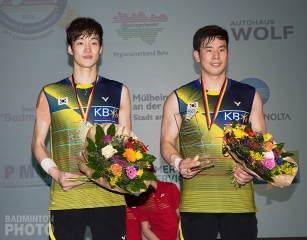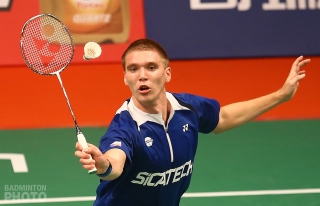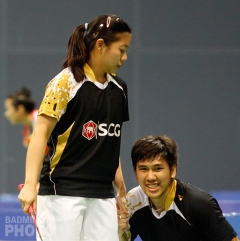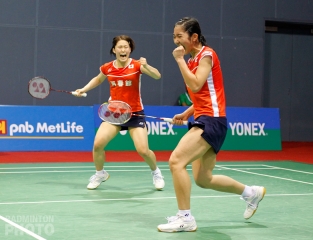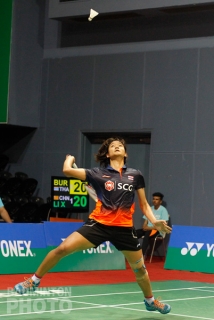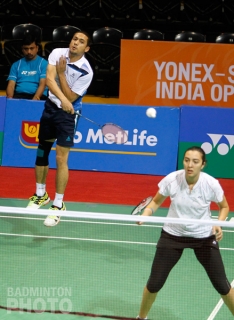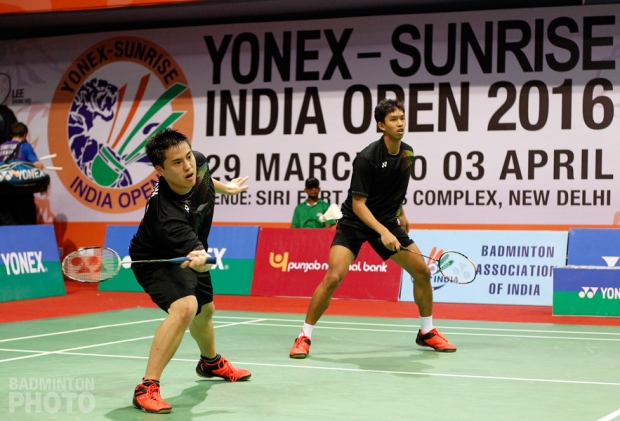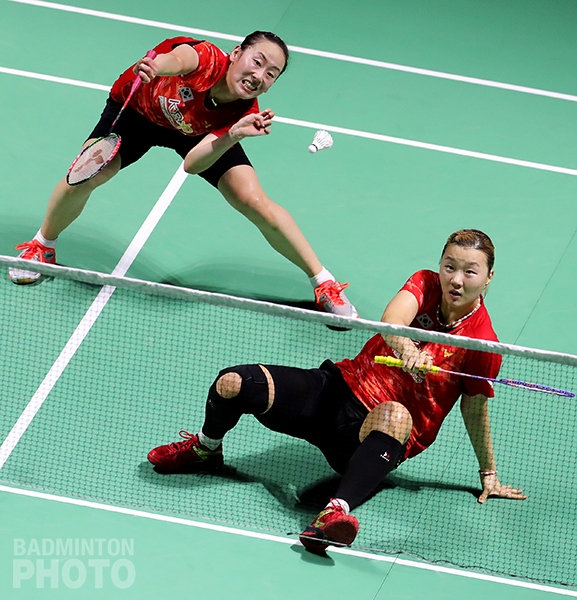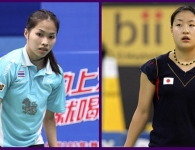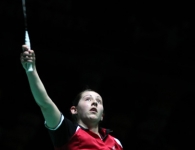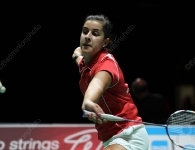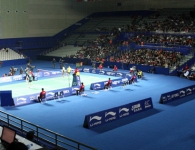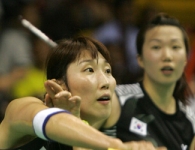Ko Sung Hyun powers into Rio contention in a second discipline and opens up a berth for duelling Czech singles players.
By Don Hearn. Photos: Badmintonphoto
With a Grand Prix Gold in one hemisphere and an International Challenge in the other, things were bound to get interesting for the race to qualify for the Rio Olympics. However, for two Czech players, the most important development may be what happened on the other side of the world from them.
Badminton is limited to 172 beds in the Athletes’ Village in any Olympics. For many middle-of-the-pack singles players, that can mean one more factor they can count on to help them make the cut. Already, their focus is on playing well, being the highest-ranked player in their country, and in particular, being among the 35 or 40 top national players.
Other things that can help them include host nation shuttlers qualifying on merit, and it can also help if some of the slightly stronger nations have trouble getting a second player into the top 16. This year, the latter effort has been helped by some of the strongest nations getting more than two into the top 16, crowding a lot of badminton powers’ seconds out of the Olympics.
But the last factor is the ability of doubles players to qualify in two events. Once they do that, it frees up a bed in the Athletes’ Village, and the singles field grows by one.
Last week, Ko Sung Hyun of Korea took his second Grand Prix Gold title of the year in men’s doubles. He and Shin Baek Cheol (pictured top), the 2014 World Champions, won the New Zealand Open title and nudged past compatriots Kim/Kim and three others, all the way into 4th position in the latest Race to Rio standings.
Ko became the fourth player, after Zhang Nan, Michael Fuchs, and Phillip Chew, to become tentatively qualified in both men’s and mixed doubles. This – along with Ygor Coelho de Oliveira of Brazil qualifying as the #33 shuttler – brings the total pre-tripartite allocation men’s singles field to thirty-nine players. That means the Czechs enter the mix.
Unfortunately for Czech Republic’s Milan Ludik (pictured above) and Petr Koukal, neither were able to make up any ground at the Polish Open. Ludik is currently in front, by less than seventy points, but Koukal – currently one notch behind his team-mate at #81 – is in Orleans this week looking for more International Challenge points.
South African swap?
In fact, Ko Sung Hyun may not be the last male doubles player to pull a double. A win in India this week should put Bodin Issara (pictured left, with Savitree Amitrapai) into contention in men’s doubles, after he picked up a mixed doubles spot a few weeks ago. While at first, Issara will merely take away the duplicate berth currently held by Germany’s Michael Fuchs, there is also a chance that both could end up being double qualifiers.
South Africa’s Andries Malan / Willem Viljoen slipped to #49 this week and have several young pairs with fewer than ten results breathing down their necks as they struggle to stay in the top 50. Should they fail to do so, their African continental spot could be reallocated further up the list and both Issara and Fuchs could be headed to Rio in two events.
The immediate beneficiary of a development like that could be another South African. Jacob Maliekal currently lags behind Edwin Ekiring of Uganda for the African continental spot in men’s singles but he would be next in line, should an extra ticket become available in singles because of more doubles players doubling up.
The women’s draw, on the other hand, is unlikely to grow any more. Sapsiree Taerattanachai has not been able to maintain the march with Dechapol Puavaranukroh in mixed doubles that had looked so promising earlier in the year.
Japan’s Naoko Fukuman (pictured right, with Kurumi Yonao) is just shy of a second spot in women’s doubles, where she would need to reach the top 8, and of being the top Japanese pair in mixed. She would need better than average results in mixed to move into contention but in women’s doubles, she and Yonao will probably have to beat the world’s best even more consistently than they have been doing of late.
Still no singles seconds
Second-ranked shuttlers from India, Korea, Japan and Indonesia are still being shut out of the top 16. According to the BWF rules, one member association can send two singles players to Rio only if both are ranked withing the top 16 at the end of the qualification period.
Lee Dong Keun is the closest in men’s singles and he increased his point total slightly in New Zealand but current #16 Wei Nan should pull even further ahead with his performance in India. In fact, 18 players started the week within 10,000 points of Wei, including 5 Indians, 3 Indonesians, 3 Koreans, and one each from Japan and Chinese Taipei but none of them were able to improve their lot in India and some, including the 3rd and 4th Koreans, are not entered in enough tournaments to give them any further shot.
In women’s singles, Bae Yeon Ju was able to consolidate her position in the top 16 with performances in New Zealand and this week in India but Thailand is still without a second representative as Busanan Ongbamrungphan continues to fall short. Porntip Buranaprasertsuk (pictured) lost a nail-biter in India to Li Xuerui and thus missed out on a chance to take a chunk out of the 5,000 points that separate her from the top 16. Indonesia also has two shuttlers in that 5,000-point window but so far, it looks as if Maria Febe Kusumastuti and Linda Weni Fanetri will just be battling each other for a single ticket to Rio.
Oceania and Pan Am
Mixed doubles is the only discipline that is sure to have an Oceania representative. Australia currently has no pair in the top 50 in men’s doubles and Setyana Mapasa’s status is still unsure in women’s. However, the only African pair in the top 50 again lost ground this week and several European and Asian pairs look set to pass current #48 Abdelrahman Kashkal / Hadia Hosny (pictured) of Egypt in the coming month, not to mention the threat coming from Australia’s 2nd and 3rd pairs.
While Oceania will have to choose a maximum of two disciplines, from among 3 or 4, in which it would like to exercise its continental spots, the United States may soon end up only needing one. In women’s doubles, Eva Lee and Paula Lynn Obanana are currently showing as holding the continental spot but in fact they are already outright the #15 pair. The same could become true of their compatriots Phillip Chew / Sattawat Pongnairat (pictured bottom) should the South Africans drop out of the top 50. Pairs from Mexico, Brazil, and Canada thus appear very unlikely to benefit from the United States reaching its limit.
![RACE TO RIO – Korean jostling brings in Czechs Ko Sung Hyun powers into Rio contention in a second discipline and opens up a berth for duelling Czech singles players. By Don Hearn. Photos: Badmintonphoto With a Grand Prix […]](http://www.badzine.net/wp-content/uploads/Newsflash-thumbnail.png)
